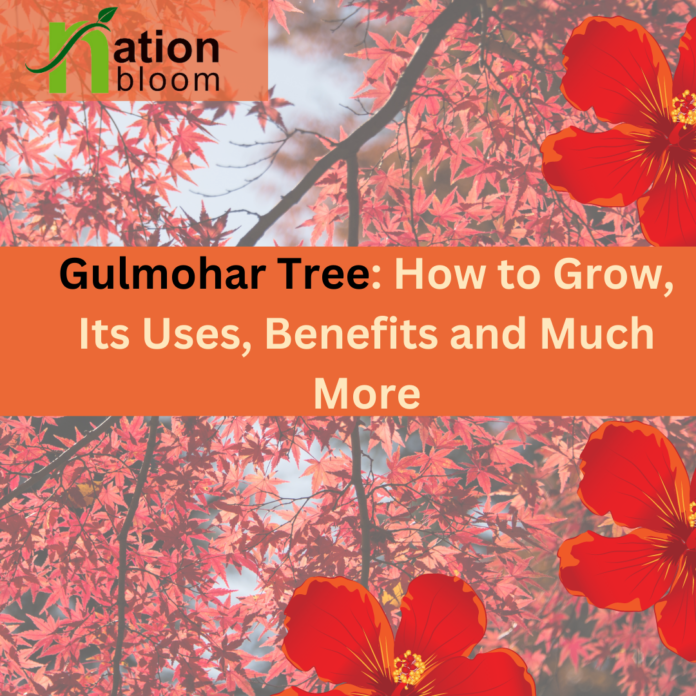Gulmohar (Delonix regia) is a beautiful, deciduous tree that is widely cultivated for its vibrant, flame-like orange and red flowers. It is native to Madagascar, but it has been introduced and naturalized in many tropical and subtropical regions of the world.
Growing Gulmohar:
- Gulmohar prefers full sun and well-drained soil. It can tolerate a wide range of soils, including alkaline and saline soils, but it prefers slightly acidic to neutral soils.
- It should be watered regularly and deeply, especially during the dry season, to keep the soil moist.
- It can be propagated from seeds or by air-layering. Air-layering is a simpler method, as it allows you to grow a mature plant from a branch of an existing tree.
- It should be protected from strong winds, as the branches are brittle and can break easily.
- It can reach up to 30 meters tall, with a spread of 20 meters, so it is important to plant it in a location with enough space for it to grow.
Uses and Benefits:
- Gulmohar is a popular ornamental tree that is widely used for landscaping and shade in parks, gardens, and streets.
- The wood is light, soft, and durable, making it suitable for making furniture, boxes, and other wooden items.
- The leaves and flowers of the tree are used in traditional medicine to treat various ailments, such as fever, infections, and skin diseases.
- Flowers are also a source of food for wildlife, including birds and insects.
- It is also used as a bonsai plant, as it is easy to shape and train.
importance of Gulmohar tree
The Gulmohar tree (Delonix regia) is an important tree for several reasons, including:
- Ornamental value: Gulmohar is widely cultivated for its striking, flame-like orange and red flowers that bloom in summer. The flowers are a source of vibrant color and beauty in gardens, parks, and streets, making it an important ornamental tree.
- Environmental benefits: The Gulmohar tree provides shade and shelter to a wide range of wildlife, including birds and insects. It also helps to reduce carbon dioxide levels in the atmosphere, which is important for mitigating the effects of climate change.
- Medicinal uses: The leaves and flowers of the Gulmohar tree have medicinal properties and are used in traditional medicine to treat various ailments, such as fever, infections, and skin diseases.
- Economic value: The wood of the Gulmohar tree is light, soft, and durable, making it suitable for use in furniture, boxes, and other wooden items. The tree is also a source of food for wildlife, which can help to support local ecosystems and contribute to the local economy.
- Cultural significance: The Gulmohar tree is widely cultivated in many tropical and subtropical regions and is often associated with festivals and celebrations. In some cultures, it is considered to be a symbol of good fortune and prosperity.
Overall, the Gulmohar tree is an important tree that provides a range of benefits to the environment, economy, and local communities.
In conclusion, the Gulmohar is a beautiful and versatile tree that offers many benefits and is well-suited for tropical and subtropical regions. With proper care, it can grow into a magnificent specimen that adds color and beauty to any landscape.
Explore More on Our Blog
Best Vegetables to Plant in February
How To Make More Grow Plants By Doing Less
Low-maintenance seasonal plants in India














